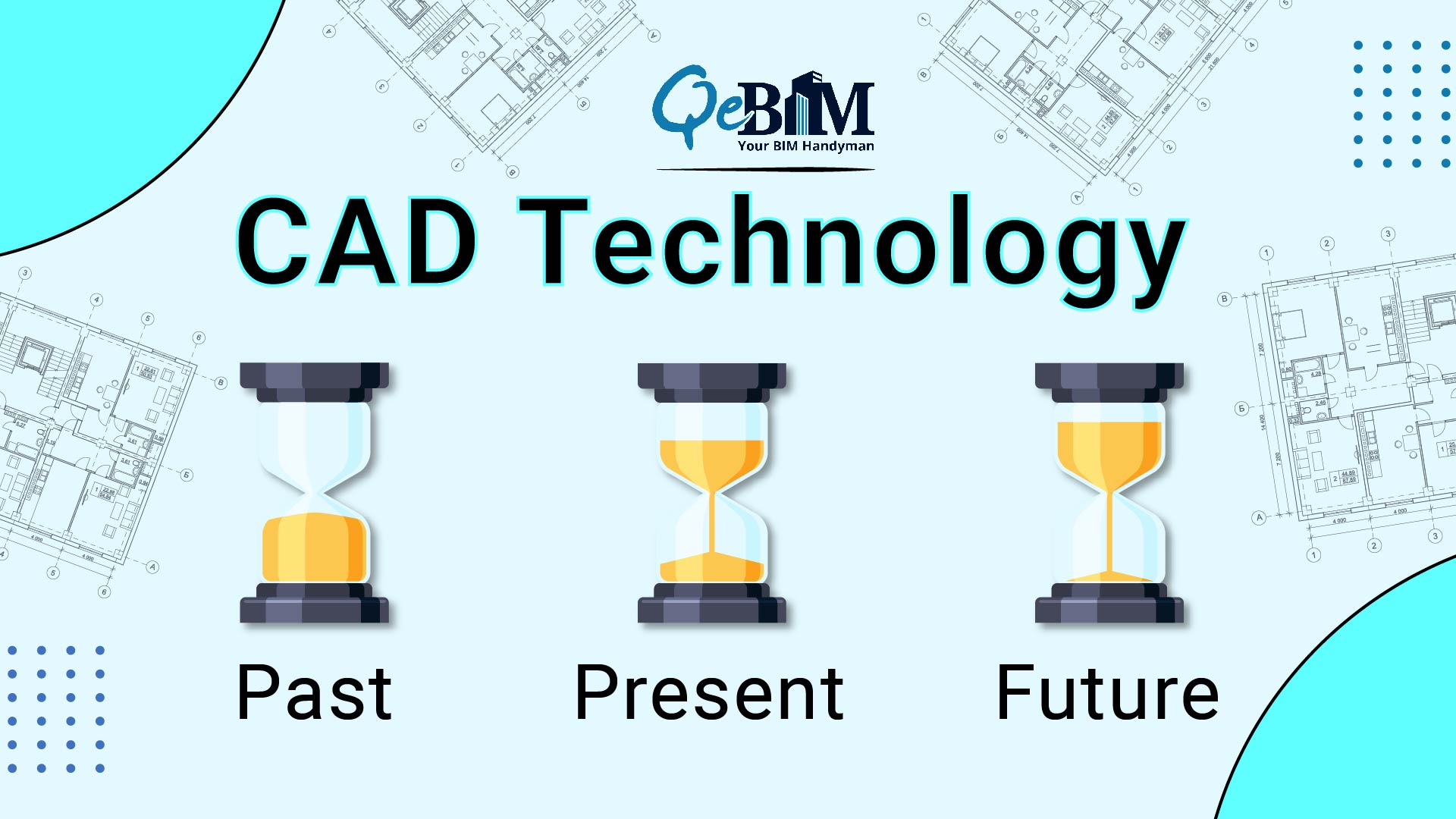CAD Technology: Past, Present, and Future

CAD, abbreviated for Computer-Aided Design, is used for designing and drafting in the construction and manufacturing industries. This technology has played an important role since its inception in the 1950s in drawing and creating efficient and complex designs in a simplified way, streamlining and speeding the design processes, and reducing costs.
At the beginning of its introduction, CAD was solely used in manufacturing processes to design products in 2D. These designs acted as blueprints or prototypes to carry out the production. They helped identify the potential flaws in the products or mechanical parts and modify and alter them before the final output saving huge costs.
Viewing the potential of 2D, it was perceived that the use of CAD could not be just limited to 2D drawings; therefore, the introduction of the 3D CAD system came in to picture in the 1980s. These were used to draft more complex 3D designs. This was a vast revolution that impacted the manufacturing industry positively. The 3D CAD systems simplified the lengthy manual design processes by creating complex drafts in no time. These systems also had the liberty to modify, alter and simulate the designs in fractions of time, cutting down the production cost and design timelines.
In the 2000s, CAD technology was further advanced with the introduction of 3D printing, additive manufacturing, and many prototyping technologies. These simplify and quicken the design testing and modeling by effortlessly creating less costly prototypes of the original designs. Thus, CAD technology evolved rapidly and became a crucial part of the design process to speed up the activities and make the products accessible to people almost at a multiplied rate.
Since its introduction, CAD (Computer-Aided Design) has evolved in the most innovative ways. These changes have significantly impacted how we design and draft the products and building structures, i.e., residential, commercial, and industrial. CAD software has expanded its application and use in other professions too. It is now helpful for engineers, builders, researchers, surgeons, and so on and is not limited to just product designers. For this reason, CAD developers are continuously trying to introduce more new features that can be useful for diverse areas.
The Future of CAD Services is more promising with the advancements in technology and software coming the right way. AI, VR, CAD cloud, and 3D Printing are the digital revolution that is changing digital drafting scenarios.
Future and Advancement of CAD
1) Artificial Intelligence (AI): With AI and automation in CAD software, the speed of designing and drafting will increase as most of the design tasks are automized, and there is less manual involvement. The chances of errors are also reduced to a greater extent, enhancing the design quality. With algorithms and formulation in CAD software, creating drawings and drafts would take a few seconds to complete and will raise the designing aspects to the next level. By successfully incorporating AI, CAD programs will be more intelligent and quickly anticipate and rectify design flaws.
2) Virtual Reality: Yet another advancement in CAD technology is Virtual Reality or VR. It is used to create 3D prototypes or simulations for giving life-like visualization. This will enhance the user experience to a greater extent, and they can have a deep insight into the product or the structure before actual production or construction. Virtual reality bridges the gap between real-life scenarios and CAD software.
3) Cloud Technology: The introduction of cloud-based software, SAAS in CAD, will allow people to collaborate well. People can now work on a single project irrespective of the devices and locations in real time. This will enhance productivity, increasing communication among the team, thereby reducing the delivery timelines and costly errors.
4) 3D Printing: 3D printing, alternatively termed Additive Manufacturing, is printing 3D designs or objects directly using CAD software. This concept is also becoming popular in the passing day in manufacturing and industrial designing. It simplifies the creation of complex components and prototypes with the utmost details, patterns, and textures in the most innovative way. It has already been used in many industries, such as Medical, FMCG, etc., and is gaining traction in almost all sectors overcoming the cons of traditional manufacturing methods.
As technology continues to emerge, CAD Drafting Services are picking up the pace toward the most promising future. In the future, it will become even more versatile, and its applications will intensify and become endless.